
A Chess Player's Guide To Clash Royale
As many of you know by now, the collaboration between Chess.com and Supercell this month has brought us the delightful and interesting crossover between two strategy games, chess and Clash Royale. I’m Joseph Wan, a FIDE candidate master and U.S. national master, as well as an avid Clasher, having reached the Ultimate Champion League three times in the past few months. I bring to you all a chess player’s guide to Clash Royale.
A Goblin grandmaster, a shadow King and infinite timelines… perfect your strategy with our Chess Clash #animation ✨🧘✨ #ClashRaidsChess pic.twitter.com/0hy1txPGtW
— Clash Royale (@ClashRoyale) September 7, 2023
Table of contents:
- What is Clash Royale?
- 1. Build A Well-Rounded Deck
- 2. Go For Positive Elixir Trades!
- 3. Cycle Cards In The BACK, Not The Front!
- 4. Don’t Activate Your Opponent’s King Tower!
- 5. Manage Your Elixir Well
- 6. Count Cycles And Elixir
- 7. Learn To Recognize Deck Archetypes
- 8. Play!
What is Clash Royale?
Before we jump into the arena, here’s a brief introduction to Clash Royale: It is a mobile strategy tower defense game played (usually) between two players. Each player has three towers—two Princess Towers and one King Tower. Using troops and spells, the two opponents fight to see who can take down the most towers in three minutes. If the game is tied when three minutes elapse, a two-minute overtime is played, where the person to take down the next tower wins the game.
The players face off in an arena with decks of eight cards. Each card is either a troop, spell, or building. Currently, there are 109 types of troops and spells in Clash Royale—as you can see, there's great potential for creativity!
To play a card, you need to spend the game's battle resource, elixir. Players start with five elixir and get one extra elixir every few seconds, up to a maximum of 10. Different cards have different elixir costs, so you have to be smart about how you spend your resources.
Much like chess, battles happen on a "board" with multiple squares. It's important to note that the board has two lanes and that troops will always move through one of the lanes.
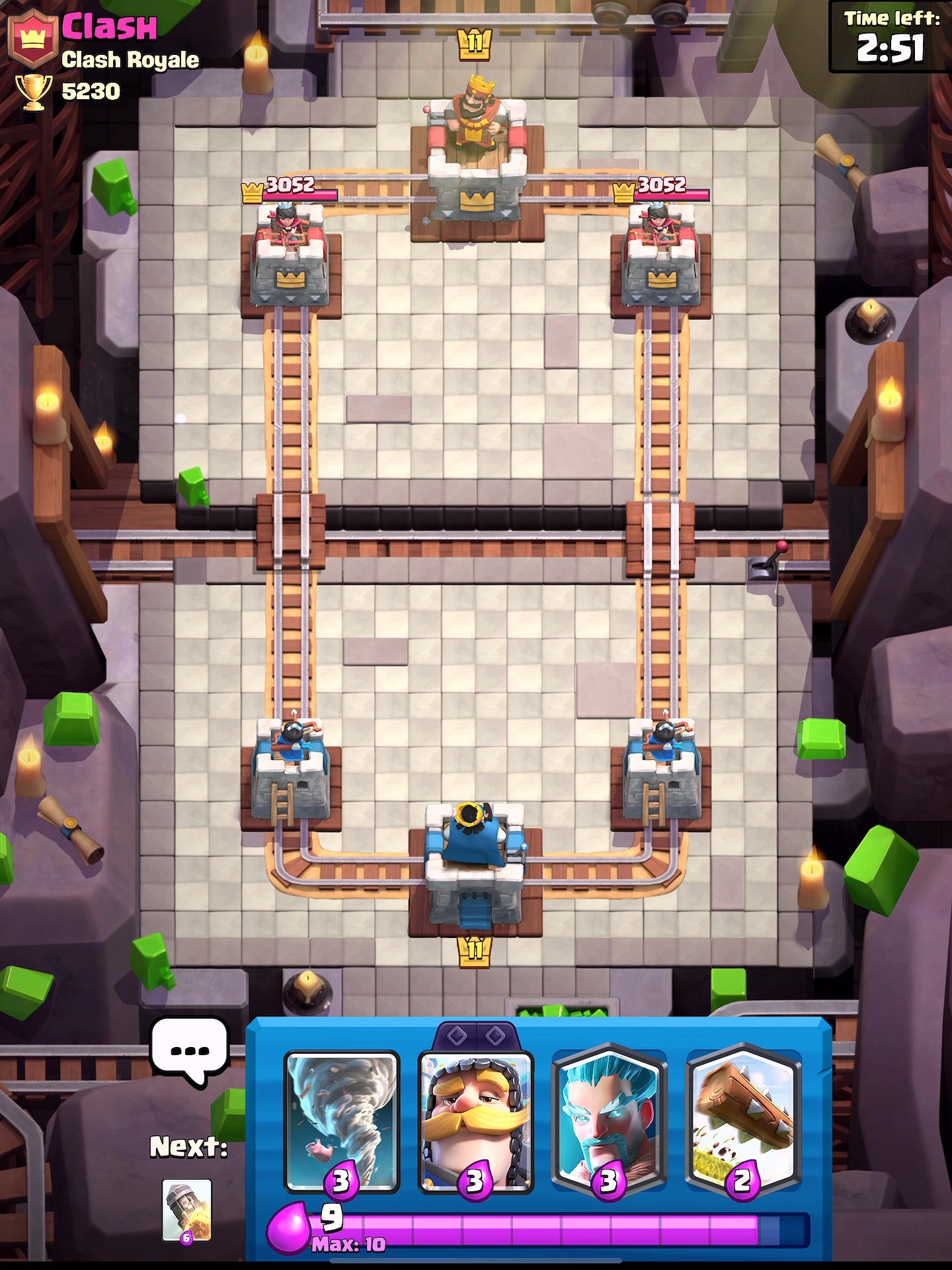
Thinking critically when playing will not only make you a better Clash Royale player but a better Chess player as well! Without further ado, here are five tips for beginner Clash players!
1. Build A Well-Rounded Deck
While creativity is encouraged in Clash Royale, certain rules should be followed when building a deck that will be successful in the long run. In chess, unless you are a certain GM Magnus Carlsen or GM Hikaru Nakamura, playing 1. e4 a6!? is generally not recommended. Just like the chess opening of your choice, the deck you decide to play dictates the style of play in the arena. Here are some tips on how to build a good functioning deck in Clash.
Choose a win condition: A win condition is a card that targets towers or buildings. Three basic examples would be Giant, Royal Giant, and Hog Rider.
High-damage ground troop: Prince, Mini PEKKA, etc.
Splash damage: A very good card is Baby Dragon
Air Support: One or two cards should definitely be dedicated to targeting troops that fly in the air!
One building: Buildings are mostly defensive units that can be used to draw the opponent's win condition; my favorite is the Goblin Cage.
Spells: one heavy (4+ elixir), one small (3 elixir or less): this is my general recommendation for beginners. Fireball (4 elixir) + Zap (2 elixir) is often a very good combination for starting out.
Here is a deck I randomly created following those guidelines that would be good for players just starting out:
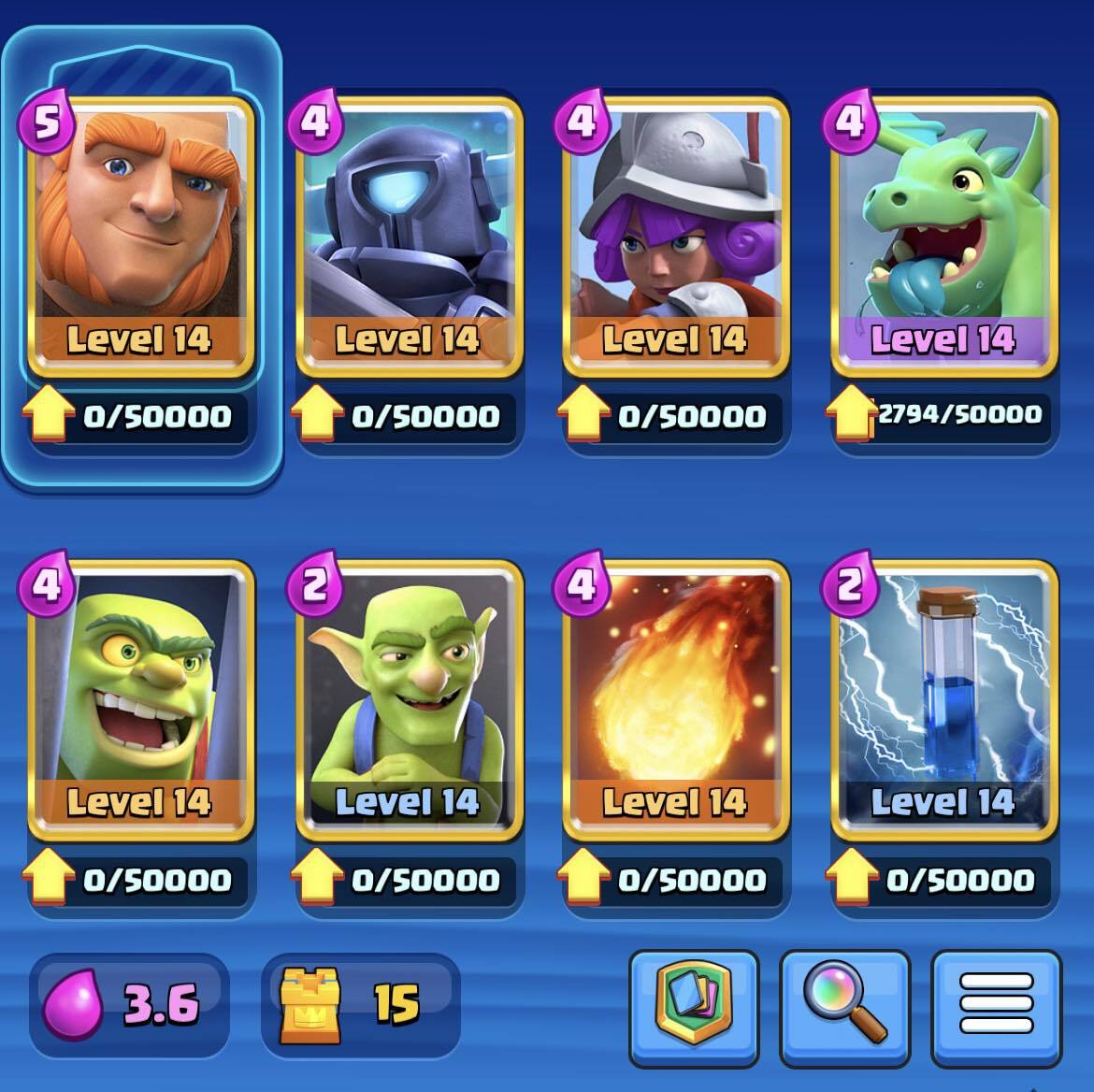
Knowing the above “beginner” deck is akin to a chess player first learning the Italian Game—a very basic setup that follows all the opening principles and gets you familiar with the key aspects of the game. As you get more advanced at the game and collect more cards, here are two of my favorite decks you can try out in the future!
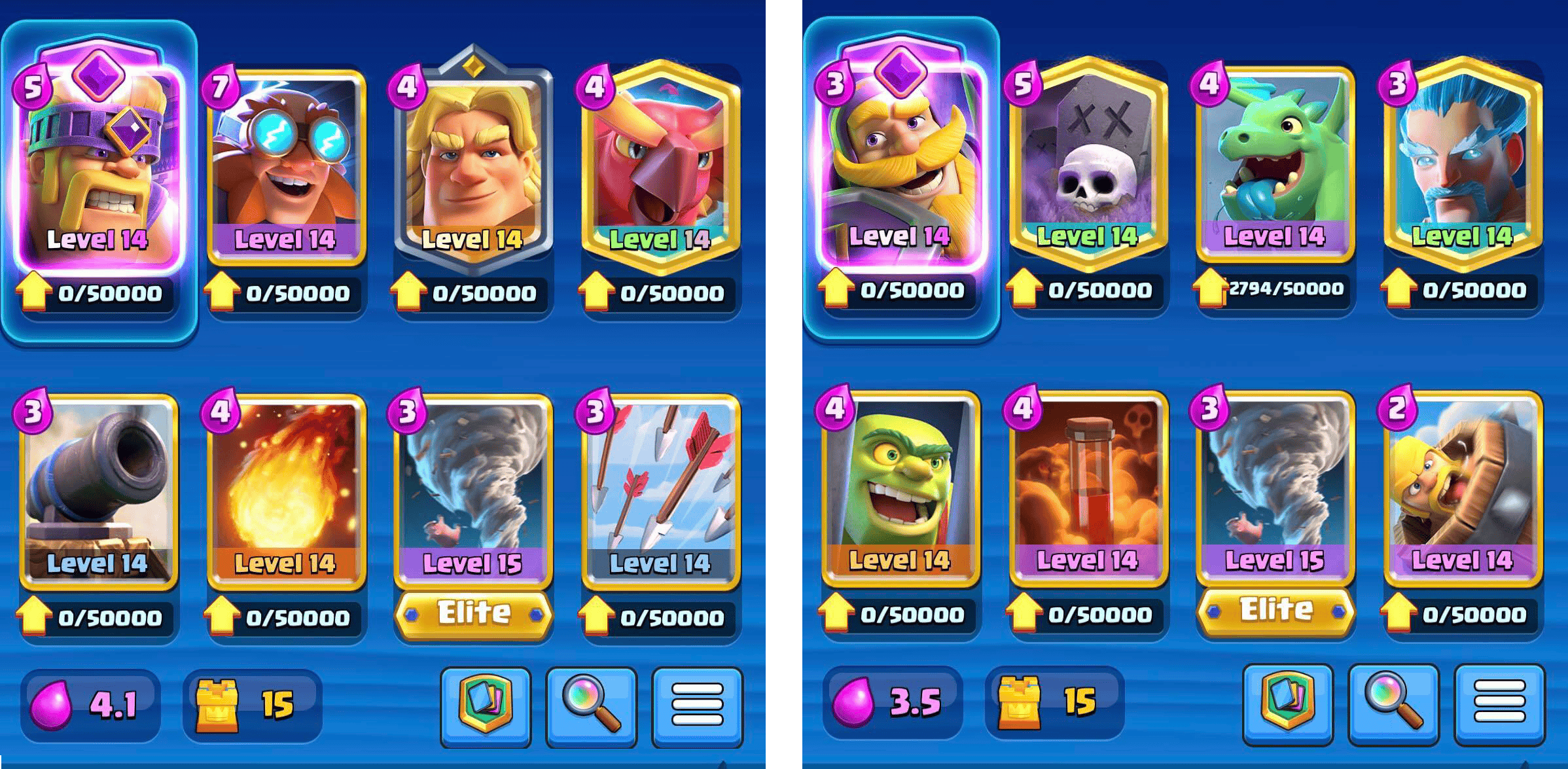
2. Go For Positive Elixir Trades!
The phrase “positive elixir trade,” coined by the popular Clash YouTuber OJ, who recently competed in the Chess Clash event, refers to using something of less elixir to take out something of more elixir. It can certainly be compared to getting a positive trade in chess, such as winning a rook for a bishop. In chess, however, the resources taken do not come back. Elixir will still continue to flow, but getting positive elixir trades on your opponent are small advantages that will add up over time.
Here is an example of a massive positive elixir trade:
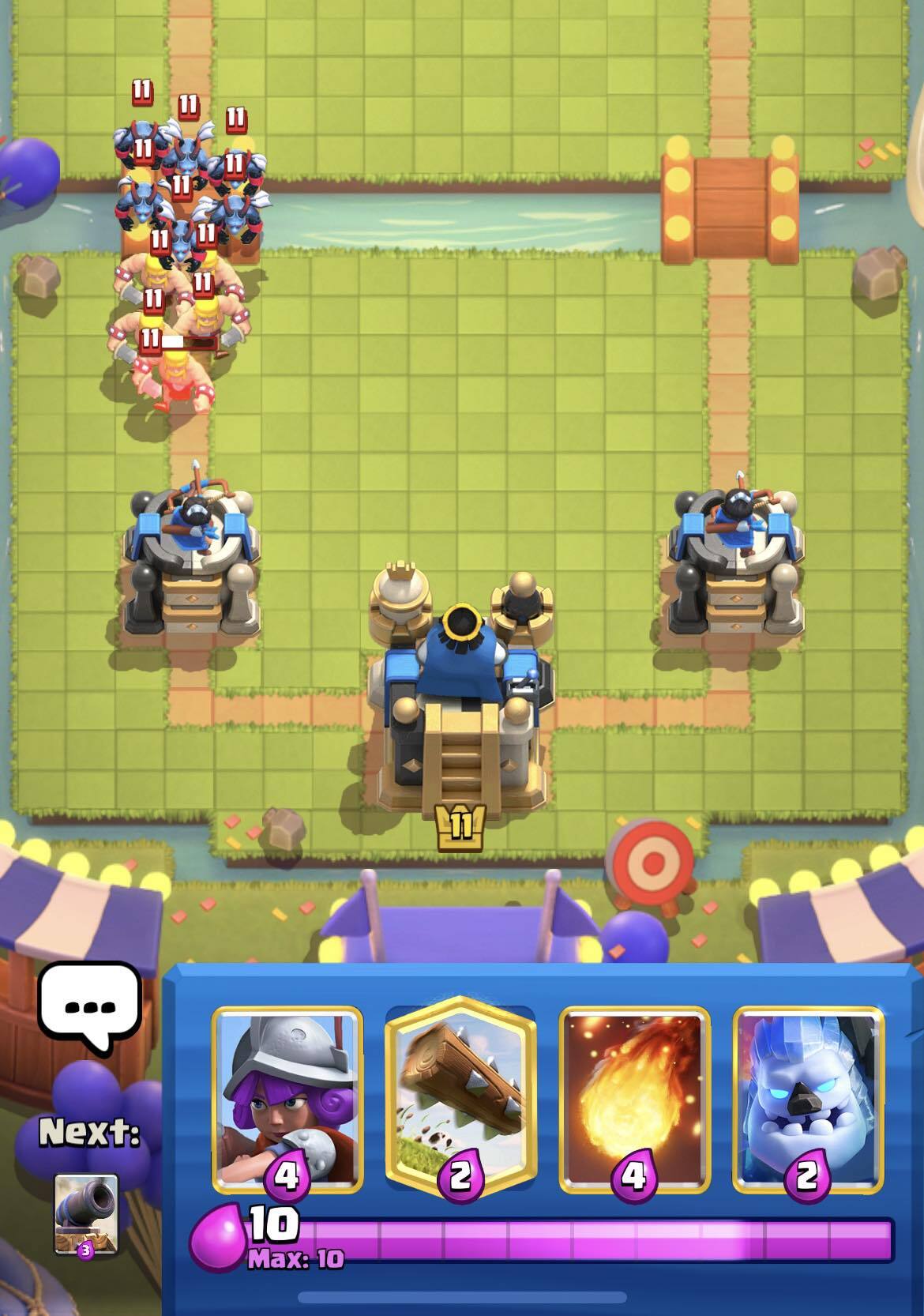
In this scenario, the opponent has invested a massive 10 elixir in his attack (five for the barbarians and five more for the minion horde). However, notice we have the fireball in hand, which costs only four elixir. That spell can be dropped to kill all the barbarians and minions, resulting in a six-elixir positive trade.
3. Cycle Cards In The BACK, Not The Front!
In all games, we get stuck at that part where we’re not sure what to do. If nothing much is going on, cycle a card in the back, behind your king tower! This is especially true for support cards. If you place a support card like the musketeer at the bridge, it will easily be taken out by your opponent’s towers and whatever troop they play, giving them a positive elixir trade.
Another reason why oftentimes it is best to cycle something at the back is that your elixir will build up as that troop walks towards the enemy territory, allowing you to build a push rather than send only one troop over.
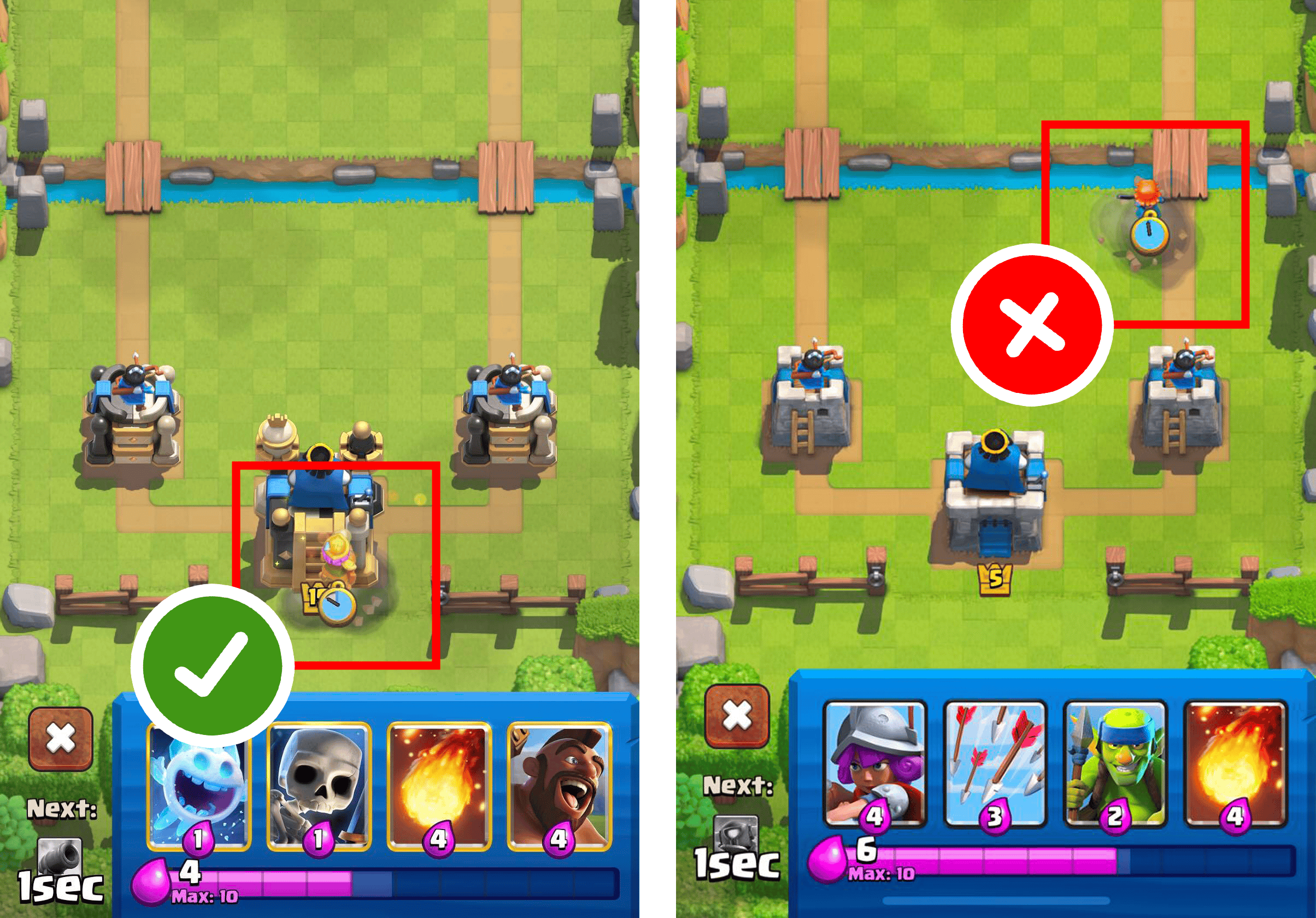
4. Don’t Activate Your Opponent’s King Tower!
This is a mistake I see amongst a lot of Clash Royale beginners! At the start of the game, only the Princess Towers can actively attack unless the King Tower gets damaged. When throwing a fireball at the opposing towers to get some damage, it may seem appealing to hit both the princess and King towers. No! This just wakes the enemy King Tower up and gives your opponent an extra unit to defend with!
When an opponent’s piece is entombed in a chess game, do you want to willingly let it get untrapped and climb out? FM Rayan Taghizadeh did a great job of that against me in the 2017 SuperNationals. From move 23 onwards, my light-squared bishop becomes trapped forever!
5. Manage Your Elixir Well
Just like managing your time in a Chess game, it is essential to manage your elixir well. You do not want to constantly be at zero elixir, playing troops as soon as you have the elixir to, as that will leave you nothing for defense when your opponent attacks. You also do not want to sit at 10 elixir since you can't "store" extra elixir and you'll be basically wasting resources—something known as “leaking elixir.” Managing your elixir well will allow you to recognize when it is best to sit back and when it is best to attack (more on this below)!
If you already know most (or all) of these things, here are some advanced tips:
6. Count Cycles And Elixir
This is something that can be hard to do but is essential to some degree in order to get better at the game. After you play a card, you will need to play four more cards before that first card cycles back into your hand. It is the same for all cards during a game, and the same for your opponent. Because of this, you can actually keep track of what your opponent has in his hands at all times.
It is recommended to keep track of your opponent’s counters to your win condition, as well as their win condition or certain annoying cards. For example, if your opponent were to play their win condition, Giant, you are assured that they will not be able to play Giant until they play another four cards.
Counting elixir is also important, and this is an extension of the beginner tip to manage your elixir well. Since the elixir bar maxes at 10, you will know when your opponent has used up all their elixir. If you have a lot of elixir at that time, it means you have a large elixir advantage, and it may be a prime opportunity for you to strike!
Here is a great video for how to count elixir and cards:
7. Learn To Recognize Deck Archetypes
Recognizing your opponent’s deck from just a few cards being played allows you to be proactive and adapt your playstyle to best counter your opponent. A few duos that will become very popular as you delve deeper into the world of playing and watching Clash Royale are: Golem + Night Witch, Giant/Goblin Giant + Sparky, and Lava Hound + Balloon.
A few archetypes that will be familiar to the experienced Clash Royale player include: Splashyard (a deck that combines several units that do area damage: Baby Dragon, Ice Wizard, Poison, and Tornado, with the Graveyard), Spell Bait (a deck that has units such as Goblin Gang, Goblin Barrel, and Princess, all to try and “bait” the log spell), and Beatdown (any deck involving a high elixir win condition: Golem decks, Giant decks, Electro Giant decks, etc).
There are many more, of course, but learning to recognize these duos and archetypes in the arena will help so much with your gameplay and help to keep you on guard. It is similar to knowing your opponent’s openings in chess, keeping in mind what they are aiming for, and adapting against it.
8. Play!
Just like in Chess, you can receive all the coaching you want, but if you don’t play, you won’t improve! From personal experience, I learned a lot from playing, figuring out my mistakes, and applying ideas better in my next games. I also learned a lot from watching videos in my spare time. I will link some of my favorite Clash Royale content creators below:
- MOLT
- SK Morten
- B-rad
- Surgical Goblin (2019 World CR Champion)
- Mugi (2021 World CR Champion)
- Mohamed Light (2022 World CR Champion)
I hope that this guide has been helpful as you begin your journey into the world of Clash Royale (or even just as a fun and light read!). While Chess has always been the more serious game for me, I have found that my chess skills have helped me do well in Clash Royale. I will leave you guys with this match, the single greatest game of Clash Royale ever played, at the 2019 Clash Royale League World Finals, between eventual World Champion Surgical Goblin and one of Clash Royale’s best, Morten. Now tell me that isn’t exciting!
See you in the arena!




